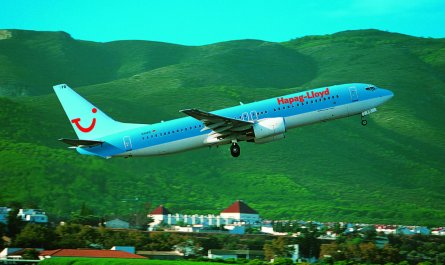Peter Gammeltoft, head of the EC’s clean air and transport unit, said in early December that “efficiency is a parameter to be rewarded”. Airlines with modern fleets have been worried that a system based on grandfather rights would penalise those that already have modern, fuel-efficient fleets, because they would have limited scope for improvement compared with competitors using older aircraft.

Gammeltoft, speaking at the annual general meeting of leisure carrier trade body the International Air Carrier Association (IACA), said that for the EC, “rewarding improvements in fuel efficiency, whether past or present, will be a key element in the choice of allocation method”. He added: “It is important that when the decision [on allocation method] is taken at political level, it is made with the full knowledge of the implications.”
The two other allocation methods the EC is looking at are based on benchmarking and an auction system. The EC has an aviation working group examining how the industry can become part of the European emissions trading scheme (ETS). The group is due to issue a report by the end of April, with a view to legislation being introduced by the end of 2006.
There is widespread scepticism over whether an extension of emissions trading to aviation will be in place by the time the second phase of the scheme is due to begin in 2008, bearing in mind it usually takes two to three years for Parliament and the Council of Ministers to adopt legislation. The Commission has said ETS could be brought in after the launch of the scheme’s second phase, by around 2010.
Gammeltoft admits that asking how long it will take for aviation to be brought within ETS is like asking the length of a rubber band. He estimates it will take two to three years, but adds: “It is a question of the urgency of political institutions.” He says some member states want an early-stage entry into the ETS.
The EC also faces the prospect of legal challenges to the scheme from third countries. Brussels wants to bring all commercial flights within European airspace into the scheme to avoid putting European airlines at a crippling competitive disadvantage.
Gammeltoft argues this would not breach the Chicago Convention because it is “conceptually” different from taxes and charges, which are barred under this agreement, and so the risk of a challenge is lower. “Airlines using CO2 credits is, in our view, completely compatible with the Chicago Convention,” he adds.
Gammeltoft says the EC takes the view that en-route emission charges are compatible with international law but admits this view remains contentious outside the European Union. But he adds that the risks to the scheme “are more political than legal”.
Brussels has faced criticism from trading partners and industry groups, which argue that emissions trading should be agreed at ICAO level to avoid regulatory fragmentation. “In principle, it is good to work through ICAO,” says Gammeltoft. “Unfortunately, we are not able to make progress here. This is a reflection of well-known different views on climate change. ICAO has been looking at this since 1999 but has not come up with a conclusion.”
He adds: “We are taking a leap forward to prove the model works. We will demonstrate this to our friends within ICAO who remain sceptical.”
While the USA remains the key sceptic, the EC is concerned the limitation of the Kyoto treaty on climate change to the developed world will harm European airlines. “Some developing-nation airlines are particularly developing,” says Gammeltoft. “In reality, Thai Airways and Emirates are equivalent to developing-nation carriers.”
Delegates at the IACA meeting warned that even if third countries were included in the scheme, European airlines would still be disadvantaged because they would have a greater proportion of intra-European flights.
Responding to the charge from Gunther Hofman, chief operating officer at TUI Belgium, that the EC “wants to be the best student in the classroom”, Gammeltoft replies: “There is clear political will that the EU should be taking the lead.” He downplays fears that airlines could desert the EU. “New Delhi-Paris can’t be substituted for New Delhi-Cape Town. You don’t have the same passenger basis.”
Gammeltoft says that by 2012, when the second phase of the ETS ends, the growth in aviation greenhouse gas emissions could cancel out more than a quarter of the cuts required to meet the EC’s overall emissions reduction target set out under the Kyoto Protocol. ■
COLIN BAKER/PALMA DE MALLORCA
Source: Airline Business
















